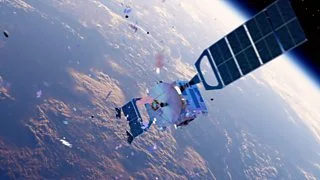
Space Junk Crisis: Is Kessler Syndrome Inevitable as Satellite Numbers Explode?
The rapid increase in satellites orbiting Earth, especially with projects like SpaceX's Starlink, is raising serious concerns among scientists. Is the Kessler Syndrome, a domino effect of collisions leading to an unmanageable debris field, becoming an inevitable reality? This article delves into the mounting threat, the potential consequences, and the efforts underway to mitigate this growing crisis.
SpaceX's Starlink constellation currently boasts over 7,300 operational satellites, a significant fraction of the 12,000 planned. While this aims to provide global high-speed internet, astronomers and space experts are increasingly worried about the long-term implications. Decades of space exploration have already left a legacy of debris, and the influx of new satellites exacerbates the risk.
The Kessler Syndrome, first proposed in 1978, describes a scenario where collisions between space objects generate more debris, leading to a cascading effect of further collisions. With close to 36,500 pieces of debris larger than four inches in diameter already in orbit, the theoretical risk is turning into a tangible concern.

The European Space Agency (ESA) has labeled the situation as an “urgent one,” noting a 50% increase in debris levels in low orbit over the past five years. Even small fragments of space debris, traveling at speeds of up to 17,000 miles per hour, can severely damage or destroy spacecraft.
Vishnu Reddy, a space scientist at the University of Arizona, believes it's no longer a question of 'if' but 'when' a major collision event will occur. “The debate is about when it will happen—whether it’s five years from now, ten years, or twenty,” Reddy said.
The 2009 collision between a defunct Russian satellite and an operational Iridium communications satellite, which created nearly 2,000 large debris fragments, serves as a stark reminder of the potential consequences. Anti-satellite missile tests by China and Russia have further aggravated the problem.
The repercussions of a large-scale collision event extend far beyond damaged satellites. Communications networks, weather data, navigation systems, and critical operations aboard the International Space Station would all be significantly impacted.
Agencies like NASA and the ESA are actively working on mitigation strategies. The ESA's ClearSpace-1 mission, scheduled for launch in 2026, aims to remove a discarded rocket adapter from orbit. International guidelines also require satellites to deorbit within five years of mission completion.
However, curbing the addition of more debris is paramount. A Chinese rocket breakup in August 2024, scattering at least 700 trackable fragments into orbit, underscores the ongoing risks. Experts point to a lack of robust international treaties and differing interpretations of existing regulations as significant challenges.
The ever-increasing number of satellites in Earth's orbit presents a complex and potentially catastrophic problem. While mitigation efforts are underway, the long-term effectiveness of these measures remains uncertain. The consequences of inaction could be devastating to our reliance on space-based technologies.
What steps do you think are most critical to preventing a Kessler Syndrome event? Share your thoughts and opinions in the comments below.